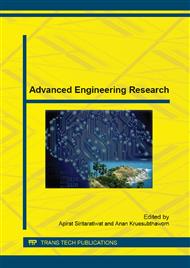p.583
p.587
p.591
p.595
p.599
p.604
p.608
p.612
p.616
Spatial Mapping of HIV Infection by Means of Mixture Models
Abstract:
Geographical distribution of HIV infection has an important role to serve the policy and the health resource allocation. A standardized infection ratio (SIR) is a measure of interest for identifying HIV infected on a map while controlling age-confounder by applying age-specific infection rates of a standard population to the study population. Mixture models of Poisson distributions allowing for heterogeneity using the nonparametric maximum likelihood (NPML) estimators were proposed to classify SIRs into the area clusters. Surveillance data of the number of HIV cases infected overall the country, classified by provinces and age groups, collected by the National Health Security Office (NHSO) were adopted during 2008 to 2013 in Thailand. The results indicated that in 2013 there were 18,081 persons infected with HIV among 623,265 people scrutinized with blood test (about 2.90 per 100). After applying the standard age-specific infection rates with the past five years 2008-2012 of HIV infection overall the country to each province, the SIR for each province varied widely around the mean 0.83 (SD =0.51) and this reported a 17% decrease in SIR Thailand 2013 compared with the national standard in 2008-2012. Mixture model has provided 5 clusters of high risk areas. The provinces with the five highest SIRs were Nongbualamphu (3.13), Chumphon (2.26), Samutprakan (2.09), Udonthani (2.04), Pathumthani (1.63). Finally, the mixture program for analysis of data is available on request.
Info:
Periodical:
Pages:
599-603
Citation:
Online since:
August 2015
Price:
Сopyright:
© 2015 Trans Tech Publications Ltd. All Rights Reserved
Share:
Citation:


